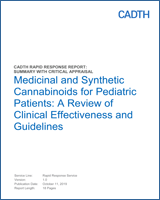 “Cannabidiol (CBD) is one of the main components of Cannabis sativa and has anxiolytic properties, but no study has been conducted to evaluate the effects of CBD on anxiety signs and symptoms in patients with Parkinson’s disease (PD).
“Cannabidiol (CBD) is one of the main components of Cannabis sativa and has anxiolytic properties, but no study has been conducted to evaluate the effects of CBD on anxiety signs and symptoms in patients with Parkinson’s disease (PD).
This study aimed to evaluate the impacts of acute CBD administration at a dose of 300 mg on anxiety measures and tremors induced by a Simulated Public Speaking Test (SPST) in individuals with PD.
METHODS:
A randomised, double-blinded, placebo-controlled, crossover clinical trial was conducted. A total of 24 individuals with PD were included and underwent two experimental sessions within a 15-day interval. After taking CBD or a placebo, participants underwent the SPST. During the test, the following data were collected: heart rate, systemic blood pressure and tremor frequency and amplitude. In addition, the Visual Analog Mood Scales (VAMS) and Self-Statements during Public Speaking Scale were applied. Statistical analysis was performed by repeated-measures analysis of variance (ANOVA) while considering the drug, SPST phase and interactions between these variables.
RESULTS:
There were statistically significant differences in the VAMS anxiety factor for the drug; CBD attenuated the anxiety experimentally induced by the SPST. Repeated-measures ANOVA showed significant differences in the drug for the variable related to tremor amplitude as recorded by the accelerometer.
CONCLUSION:
Acute CBD administration at a dose of 300 mg decreased anxiety in patients with PD, and there was also decreased tremor amplitude in an anxiogenic situation.”
https://www.ncbi.nlm.nih.gov/pubmed/31909680
https://journals.sagepub.com/doi/abs/10.1177/0269881119895536?journalCode=jopa

 “Two natural mixtures, Allium sativum fermented extract (BGE) and cannabinol oil extract (CBD), were assessed for their ability to inhibit and remove Pseudomonas aeruginosa biofilms on soft contact lenses in comparison to a multipurpose Soft Contact Lens-care solution present on the Italian market.
“Two natural mixtures, Allium sativum fermented extract (BGE) and cannabinol oil extract (CBD), were assessed for their ability to inhibit and remove Pseudomonas aeruginosa biofilms on soft contact lenses in comparison to a multipurpose Soft Contact Lens-care solution present on the Italian market. “In traditional medicine, Cannabis sativa has been prescribed for a variety of diseases. Today, the plant is largely known for its recreational purpose, but it may find a way back to what it was originally known for: a herbal remedy. Most of the plant’s ingredients, such as Δ-tetrahydrocannabinol,
“In traditional medicine, Cannabis sativa has been prescribed for a variety of diseases. Today, the plant is largely known for its recreational purpose, but it may find a way back to what it was originally known for: a herbal remedy. Most of the plant’s ingredients, such as Δ-tetrahydrocannabinol,  “Cannabis was used for cancer patients as early as about 2500 years ago.
“Cannabis was used for cancer patients as early as about 2500 years ago. “This study evaluated the potential of combined cannabis constituents to reduce nausea.
“This study evaluated the potential of combined cannabis constituents to reduce nausea. “Epilepsy is a chronic disease characterized by recurrent unprovoked seizures. Up to 30% of children with epilepsy will be refractory to standard anticonvulsant therapy, and those with epileptic encephalopathy can be particularly challenging to treat.
“Epilepsy is a chronic disease characterized by recurrent unprovoked seizures. Up to 30% of children with epilepsy will be refractory to standard anticonvulsant therapy, and those with epileptic encephalopathy can be particularly challenging to treat.
 “Palliative care is defined by the World Health Organization as “an approach that improves the quality of life of patients and their families facing the problem associated with life-threatening illness…”. The last days and hours of a person’s life can be associated with immense physical as well as emotional suffering Relief of pain and other distressing symptoms, and enhancement of quality of life, are among the essential elements of good palliative care. Palliative care could benefit an estimated 69% to 82% of dying individuals in Canada. As Canada’s population ages, with increasing prevalence of chronic conditions and treatments resulting in prolonged life, it is expected that there will be an increased need for palliative care services.
“Palliative care is defined by the World Health Organization as “an approach that improves the quality of life of patients and their families facing the problem associated with life-threatening illness…”. The last days and hours of a person’s life can be associated with immense physical as well as emotional suffering Relief of pain and other distressing symptoms, and enhancement of quality of life, are among the essential elements of good palliative care. Palliative care could benefit an estimated 69% to 82% of dying individuals in Canada. As Canada’s population ages, with increasing prevalence of chronic conditions and treatments resulting in prolonged life, it is expected that there will be an increased need for palliative care services. “Cannabinoids are pharmacologically active agents extracted from the cannabis plant.
“Cannabinoids are pharmacologically active agents extracted from the cannabis plant. 